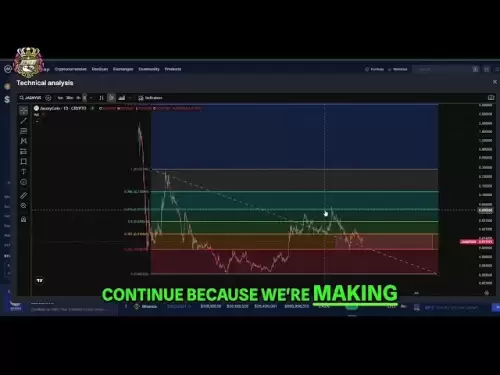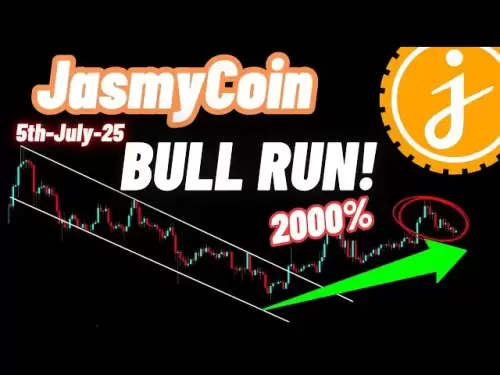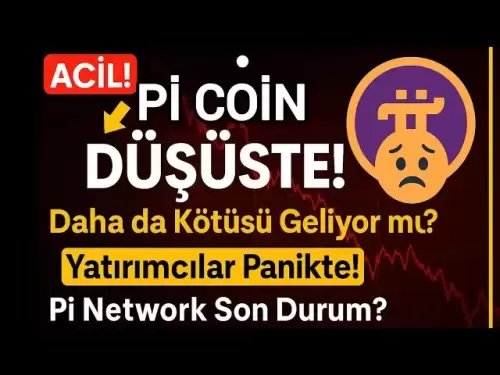-
 Bitcoin
Bitcoin $108,250.0992
0.11% -
 Ethereum
Ethereum $2,515.9404
0.03% -
 Tether USDt
Tether USDt $1.0003
0.00% -
 XRP
XRP $2.2166
-0.19% -
 BNB
BNB $656.5904
0.29% -
 Solana
Solana $147.4122
-0.58% -
 USDC
USDC $1.0000
-0.01% -
 TRON
TRON $0.2830
0.06% -
 Dogecoin
Dogecoin $0.1641
0.27% -
 Cardano
Cardano $0.5739
-0.19% -
 Hyperliquid
Hyperliquid $39.1463
-0.11% -
 Sui
Sui $2.8882
-0.02% -
 Bitcoin Cash
Bitcoin Cash $487.6428
0.31% -
 Chainlink
Chainlink $13.2097
0.07% -
 UNUS SED LEO
UNUS SED LEO $9.0308
0.10% -
 Avalanche
Avalanche $17.8608
0.13% -
 Stellar
Stellar $0.2379
-0.06% -
 Toncoin
Toncoin $2.7400
-0.39% -
 Shiba Inu
Shiba Inu $0.0...01144
-0.36% -
 Litecoin
Litecoin $87.5467
0.66% -
 Hedera
Hedera $0.1538
0.22% -
 Monero
Monero $315.5479
0.36% -
 Dai
Dai $1.0000
0.00% -
 Polkadot
Polkadot $3.3523
-0.71% -
 Ethena USDe
Ethena USDe $1.0003
0.01% -
 Bitget Token
Bitget Token $4.3960
-1.03% -
 Uniswap
Uniswap $7.2663
4.19% -
 Aave
Aave $272.8619
2.04% -
 Pepe
Pepe $0.0...09676
-0.18% -
 Pi
Pi $0.4586
-2.87%
How do I adjust the gas fee on Trust Wallet?
Adjusting gas fees on Trust Wallet optimizes Ethereum transactions; learn to set gas price and limit for faster, cost-effective processing.
Apr 12, 2025 at 03:42 am
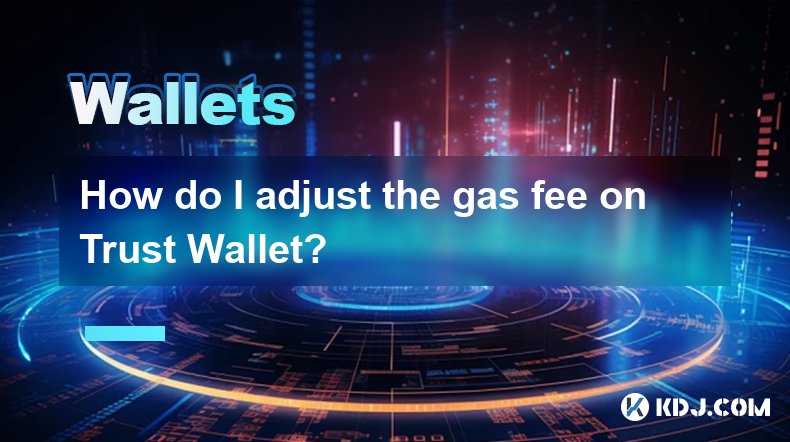
Adjusting the gas fee on Trust Wallet is an essential skill for anyone looking to optimize their transactions on the Ethereum network. Gas fees are payments made to miners for processing transactions and executing smart contracts on the Ethereum blockchain. By adjusting these fees, users can prioritize their transactions and potentially save money. In this article, we will walk through the detailed steps on how to adjust the gas fee on Trust Wallet, ensuring you can make informed decisions about your transactions.
Understanding Gas Fees
Before diving into the adjustment process, it's crucial to understand what gas fees are and why they matter. Gas fees are the costs associated with executing transactions or smart contracts on the Ethereum network. These fees are paid in Ether (ETH) and are determined by two main factors: gas price and gas limit. The gas price is the amount of ETH you're willing to pay per unit of gas, while the gas limit is the maximum amount of gas you're willing to use for the transaction. Adjusting these values can help you manage the speed and cost of your transactions.
Preparing to Adjust Gas Fees
To adjust the gas fee on Trust Wallet, you'll need to ensure you have the latest version of the app installed on your device. Trust Wallet is available for both iOS and Android, and you can download it from the respective app stores. Once you have the app installed, make sure you have some ETH in your wallet to cover the gas fees. You can purchase ETH directly within Trust Wallet or transfer it from another wallet.
Accessing the Transaction Settings
To begin adjusting the gas fee, you'll need to initiate a transaction. Here's how to do it:
- Open Trust Wallet and navigate to the wallet containing your ETH.
- Tap on the "Send" button to start a new transaction.
- Enter the recipient's address and the amount of ETH you wish to send.
- Before confirming the transaction, tap on the "Advanced" or "Settings" option, usually located at the bottom of the screen.
Adjusting the Gas Price
Once you're in the transaction settings, you'll see options to adjust the gas price and gas limit. To adjust the gas price:
- Look for the Gas Price field. This is usually measured in Gwei, where 1 Gwei equals 0.000000001 ETH.
- You can manually enter a gas price or use the slider to adjust it. Lower gas prices will result in slower transaction times but can save you money, while higher gas prices will prioritize your transaction but cost more.
- Consider using a gas price estimator tool or checking current network conditions to help you decide on an appropriate gas price.
Setting the Gas Limit
The gas limit determines the maximum amount of gas your transaction can use. To adjust the gas limit:
- Locate the Gas Limit field. This is usually set to a default value based on the type of transaction you're making.
- You can manually enter a new gas limit or use the slider to adjust it. Increasing the gas limit can ensure your transaction has enough gas to complete, but it will also increase the potential cost.
- For most standard transactions, the default gas limit should be sufficient. However, if you're executing a complex smart contract, you may need to increase it.
Confirming and Sending the Transaction
After adjusting the gas price and gas limit to your satisfaction, you're ready to confirm and send the transaction:
- Review the total transaction fee, which is calculated based on the gas price and gas limit you've set.
- If everything looks correct, tap on the "Confirm" or "Send" button to initiate the transaction.
- The transaction will now be broadcast to the Ethereum network, and miners will process it based on the gas price you've set.
Monitoring the Transaction
Once your transaction is sent, you can monitor its progress within Trust Wallet:
- Go to the "Transactions" tab to view the status of your transaction.
- You'll see whether the transaction is pending, confirmed, or failed.
- If the transaction is taking longer than expected, you may need to adjust the gas price and resend it.
Troubleshooting Common Issues
Sometimes, you may encounter issues when adjusting gas fees. Here are some common problems and how to address them:
- Transaction Stuck: If your transaction is stuck due to a low gas price, you can try increasing the gas price and resending the transaction. This is known as a "speed-up" or "cancel-and-replace" transaction.
- Insufficient Gas: If your transaction fails due to insufficient gas, you'll need to increase the gas limit and resend the transaction.
- High Network Congestion: During times of high network congestion, gas prices can spike. In such cases, you may need to wait for lower gas prices or be willing to pay more to get your transaction processed quickly.
Frequently Asked Questions
Q: Can I adjust gas fees for all types of transactions on Trust Wallet?
A: Yes, you can adjust gas fees for any transaction that involves the Ethereum network, including sending ETH, interacting with smart contracts, and swapping tokens.
Q: What happens if I set the gas price too low?
A: If you set the gas price too low, your transaction may take longer to process or may not be processed at all. Miners prioritize transactions with higher gas prices, so a low gas price can result in a stuck transaction.
Q: Is there a way to estimate the optimal gas price before sending a transaction?
A: Yes, you can use gas price estimator tools available online or within some blockchain explorers. These tools provide real-time data on current gas prices and can help you set an appropriate gas price for your transaction.
Q: Can I adjust gas fees on other blockchain networks using Trust Wallet?
A: Trust Wallet supports multiple blockchain networks, but gas fee adjustments are primarily relevant to the Ethereum network. For other networks, the process may differ or may not be necessary, depending on the network's fee structure.
Disclaimer:info@kdj.com
The information provided is not trading advice. kdj.com does not assume any responsibility for any investments made based on the information provided in this article. Cryptocurrencies are highly volatile and it is highly recommended that you invest with caution after thorough research!
If you believe that the content used on this website infringes your copyright, please contact us immediately (info@kdj.com) and we will delete it promptly.
- XRP's Upside Potential: Analysts Bullish Despite Accessibility Concerns
- 2025-07-06 10:30:13
- Dubai Hotelier, Crypto Scam, and an Arrest in India: A Tangled Web
- 2025-07-06 10:30:13
- Bitcoin's Calm Before the Storm: ETF Inflows Surge Amidst Low Volatility
- 2025-07-06 10:50:13
- Crypto Capital Inflows: Why Qubetics, Ethereum, and SUI are Investment Coins to Watch
- 2025-07-06 10:50:13
- XRP Price Prediction: Can XRP Break the Weekly Downtrend?
- 2025-07-06 11:00:13
- Bitcoin: Technology, Value Gamble, and the $100,000 Milestone
- 2025-07-06 11:00:13
Related knowledge
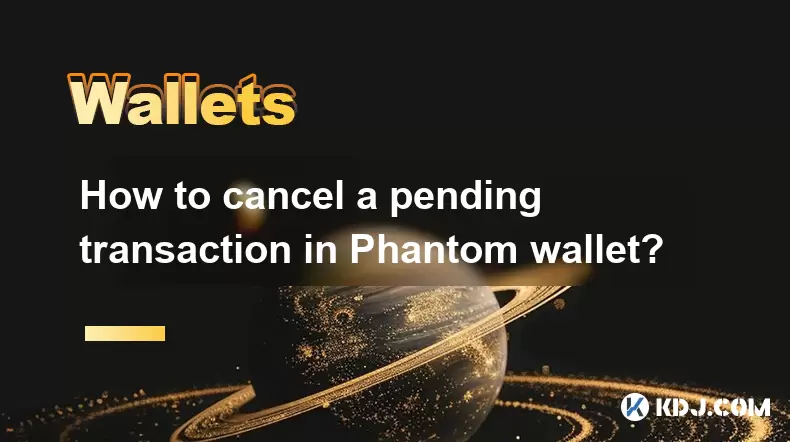
How to cancel a pending transaction in Phantom wallet?
Jul 03,2025 at 07:21pm
Understanding Pending Transactions in Phantom WalletA pending transaction in the Phantom wallet occurs when a user initiates a transfer or interaction with the Solana blockchain, but it hasn't yet been confirmed by the network. This can happen due to various reasons such as low transaction fees, network congestion, or incorrect gas settings. It's import...
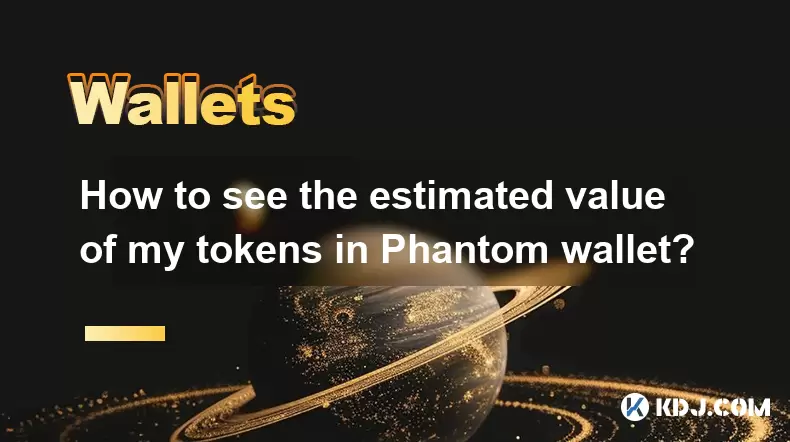
How to see the estimated value of my tokens in Phantom wallet?
Jul 04,2025 at 12:21am
What is Phantom Wallet?Phantom wallet is one of the most popular cryptocurrency wallets designed for the Solana blockchain. It allows users to store, send, receive, and manage various tokens built on Solana, including SPL tokens and NFTs. The wallet offers a user-friendly interface, making it accessible for both beginners and advanced users in the crypt...
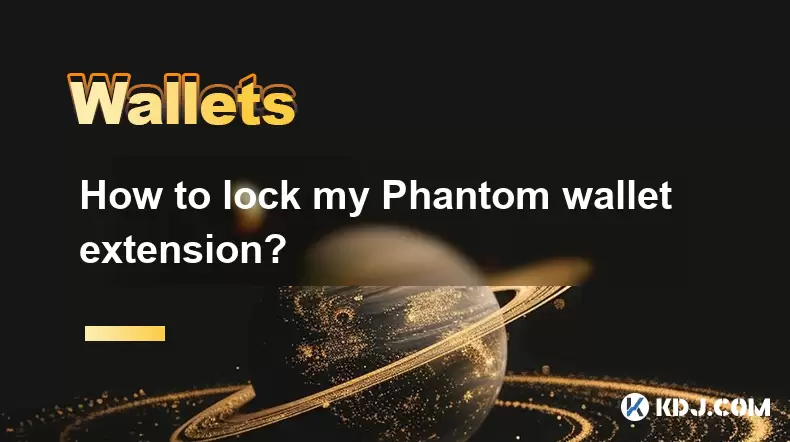
How to lock my Phantom wallet extension?
Jul 03,2025 at 11:14am
What Is the Phantom Wallet and Why Lock It?The Phantom wallet is a popular non-custodial cryptocurrency wallet designed for interacting with the Solana blockchain. Supporting both browser extensions and mobile apps, Phantom allows users to store, send, receive, and stake SOL tokens, as well as interact with decentralized applications (dApps). Securing y...

Does Phantom wallet offer two-factor authentication (2FA)?
Jul 03,2025 at 09:00am
Understanding Phantom Wallet and Its Security FeaturesPhantom wallet is a widely used non-custodial cryptocurrency wallet that supports the Solana blockchain. It allows users to store, send, receive, and interact with decentralized applications (dApps) seamlessly. As security is a top priority for any crypto wallet user, security features like two-facto...
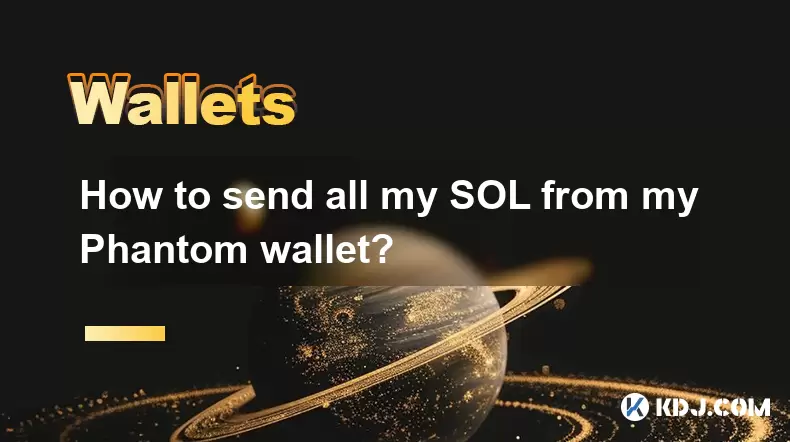
How to send all my SOL from my Phantom wallet?
Jul 06,2025 at 10:00am
Preparing to Send SOL from Your Phantom WalletBefore initiating any transaction, it is crucial to ensure that your Phantom wallet is fully set up and connected to the correct network. Phantom supports multiple networks, but for sending SOL, you must be on the Solana blockchain. Confirm this by checking the network indicator in the top-right corner of th...
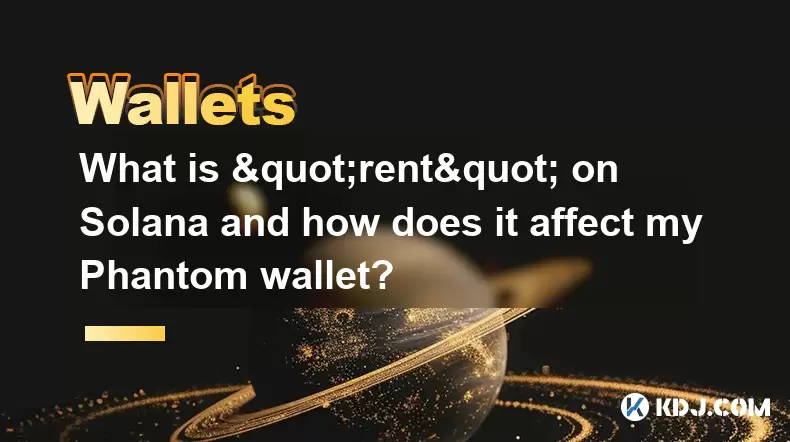
What is "rent" on Solana and how does it affect my Phantom wallet?
Jul 02,2025 at 08:35pm
Understanding 'Rent' on SolanaIn the context of Solana, the term 'rent' refers to a storage fee that users pay for maintaining data on the blockchain. Unlike Ethereum, where storage costs are paid once via gas fees during contract deployment, Solana implements a recurring cost model to ensure efficient usage of network resources. This means that any acc...

How to cancel a pending transaction in Phantom wallet?
Jul 03,2025 at 07:21pm
Understanding Pending Transactions in Phantom WalletA pending transaction in the Phantom wallet occurs when a user initiates a transfer or interaction with the Solana blockchain, but it hasn't yet been confirmed by the network. This can happen due to various reasons such as low transaction fees, network congestion, or incorrect gas settings. It's import...

How to see the estimated value of my tokens in Phantom wallet?
Jul 04,2025 at 12:21am
What is Phantom Wallet?Phantom wallet is one of the most popular cryptocurrency wallets designed for the Solana blockchain. It allows users to store, send, receive, and manage various tokens built on Solana, including SPL tokens and NFTs. The wallet offers a user-friendly interface, making it accessible for both beginners and advanced users in the crypt...

How to lock my Phantom wallet extension?
Jul 03,2025 at 11:14am
What Is the Phantom Wallet and Why Lock It?The Phantom wallet is a popular non-custodial cryptocurrency wallet designed for interacting with the Solana blockchain. Supporting both browser extensions and mobile apps, Phantom allows users to store, send, receive, and stake SOL tokens, as well as interact with decentralized applications (dApps). Securing y...

Does Phantom wallet offer two-factor authentication (2FA)?
Jul 03,2025 at 09:00am
Understanding Phantom Wallet and Its Security FeaturesPhantom wallet is a widely used non-custodial cryptocurrency wallet that supports the Solana blockchain. It allows users to store, send, receive, and interact with decentralized applications (dApps) seamlessly. As security is a top priority for any crypto wallet user, security features like two-facto...

How to send all my SOL from my Phantom wallet?
Jul 06,2025 at 10:00am
Preparing to Send SOL from Your Phantom WalletBefore initiating any transaction, it is crucial to ensure that your Phantom wallet is fully set up and connected to the correct network. Phantom supports multiple networks, but for sending SOL, you must be on the Solana blockchain. Confirm this by checking the network indicator in the top-right corner of th...

What is "rent" on Solana and how does it affect my Phantom wallet?
Jul 02,2025 at 08:35pm
Understanding 'Rent' on SolanaIn the context of Solana, the term 'rent' refers to a storage fee that users pay for maintaining data on the blockchain. Unlike Ethereum, where storage costs are paid once via gas fees during contract deployment, Solana implements a recurring cost model to ensure efficient usage of network resources. This means that any acc...
See all articles





















